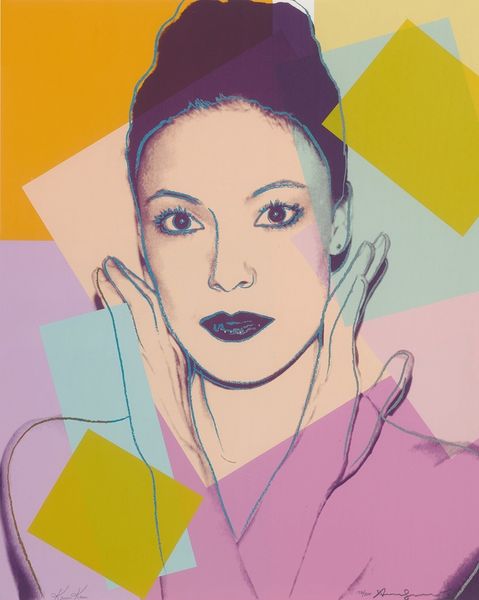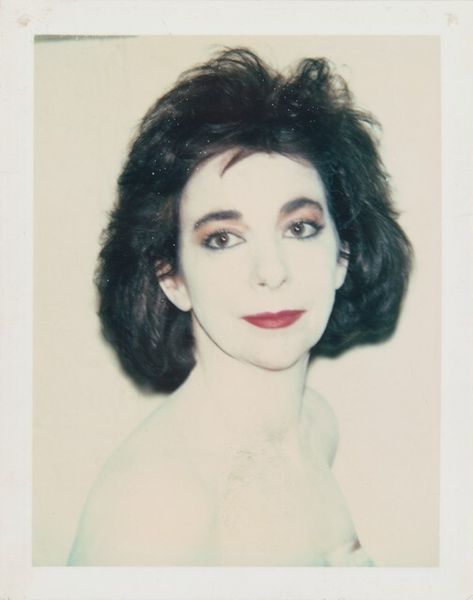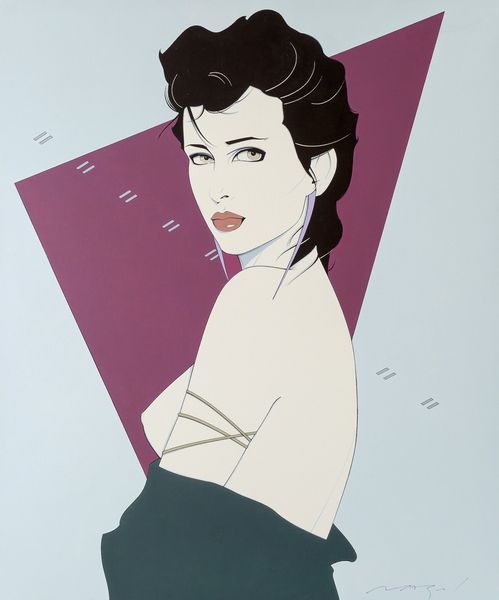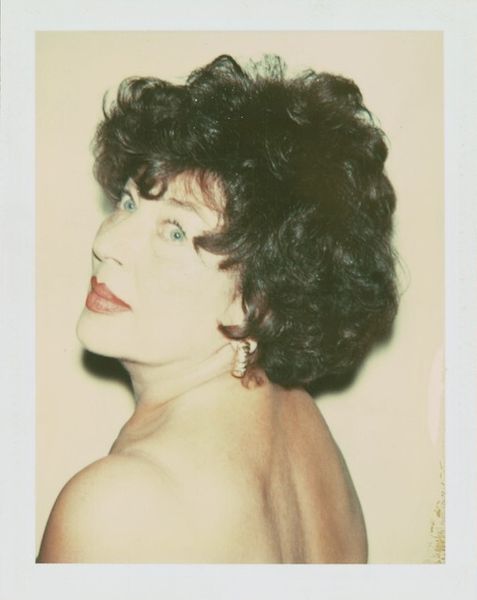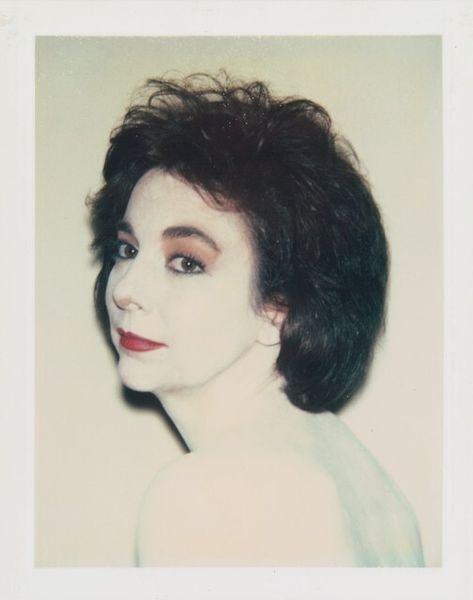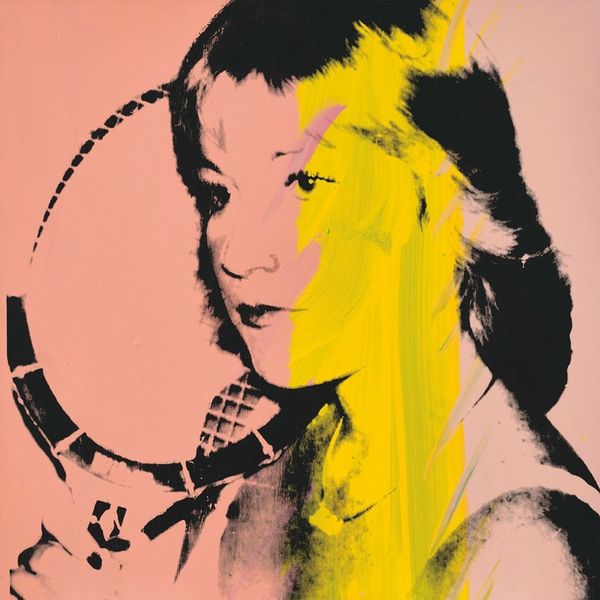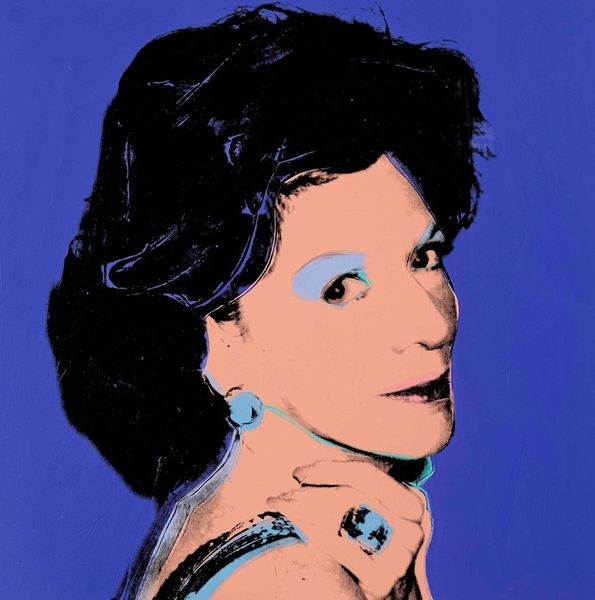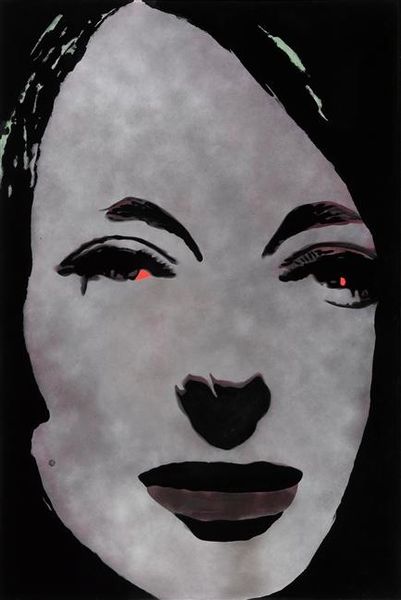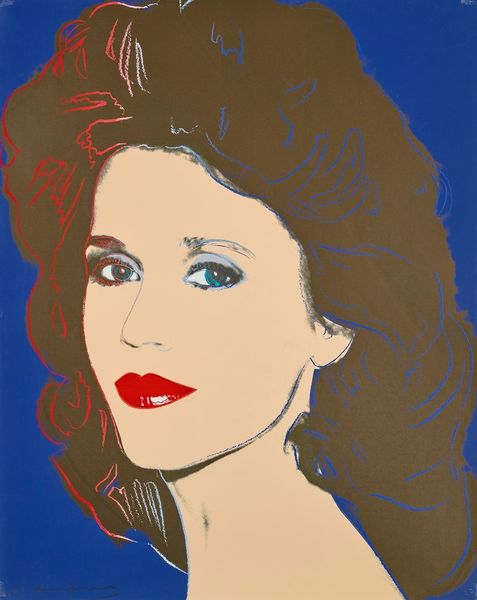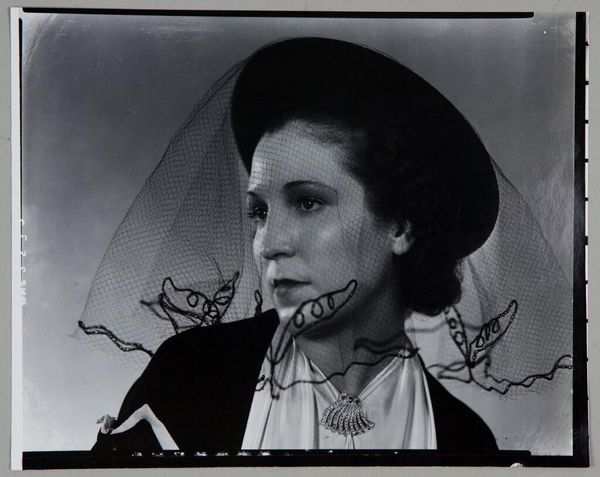
Copyright: Modern Artists: Artvee
Curator: Here we have Andy Warhol's 1974 portrait of Hélène Rochas, rendered in acrylic on canvas. The flat planes of color immediately strike you, don't they? Editor: It’s interesting how the material simplicity, acrylic on canvas, still conveys such a… fragile impression. The woman almost seems to be dissolving into the pink background. Curator: That's quite fitting, actually. Rochas herself embodied an ideal of feminine elegance. Consider how Warhol, fascinated by celebrity and beauty, captures her. Pink, a colour long coded with femininity, is dominant. Her face seems almost shell-like. Editor: And the technique… the bold, almost careless strokes. You can almost feel the squeegee moving across the canvas. There is nothing delicate about the act of *making* it, which throws her refined elegance into an odd tension. Was it perhaps commissioned? The Rochas fashion and perfume house would certainly have been canny about branding. Curator: Very likely so. The portrait can be seen as a comment on the manufacturing of iconic personas, like the brand itself— Warhols artistic production line producing the images by proxy which challenges the unique handmade artistic vision. He uses this mass-production technique to capture a person that has a perfume and fashion empire created after her own likeness. The color choices carry psychological weight too. The green eyeshadow almost looks acidic and contrasts jarringly with the pink, lending a sense of unease beneath the surface. Editor: Right. The pink speaks of romanticism, perhaps… a faded glamour. But the slightly clashing greens undermine that entirely. One can only imagine the costs of producing something so very apparently *un*labored, which reveals so much about the Warholian attitude towards high/low class production methods of the day, a signifier that something supposedly "simple" costs so very much. Curator: Yes, exactly. And consider that for a moment: Rochas, the epitome of a created, refined identity, rendered through a process which, while mechanically produced, hints at underlying instability through these discordant colors. Editor: Ultimately, it reminds you that the material, even in its simulated “cheapness”, embodies that very tension in postwar consumer desire—the dream of affluence for all masking a deeper social rift. Curator: A dream spun from both paint and societal desires. Thank you for joining me for this look at Andy Warhol's "Hélène Rochas". Editor: A compelling artwork whose deceptively simplistic nature holds multitudes for modern eyes.
Comments
No comments
Be the first to comment and join the conversation on the ultimate creative platform.
